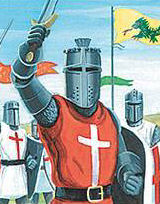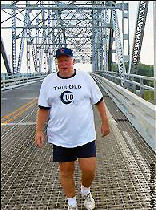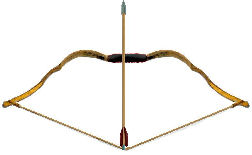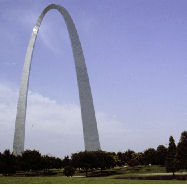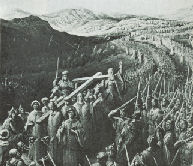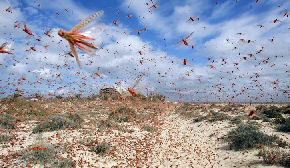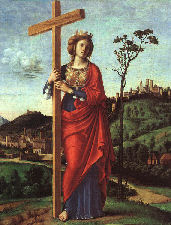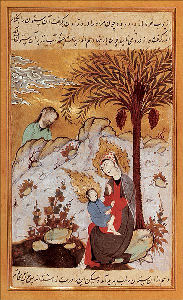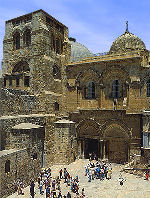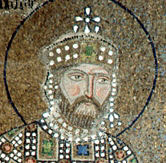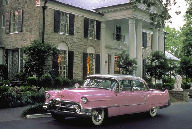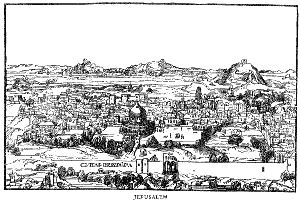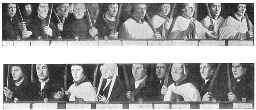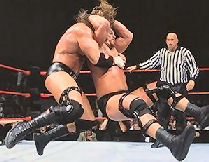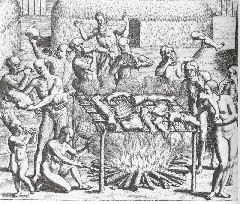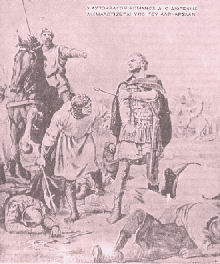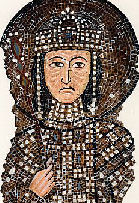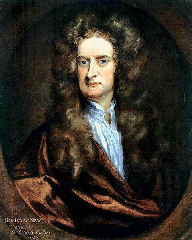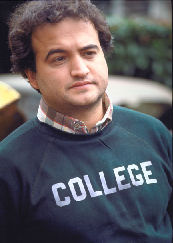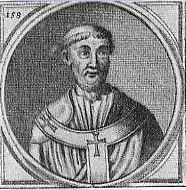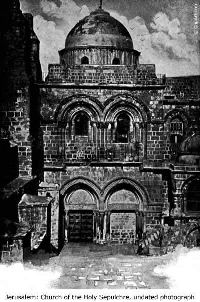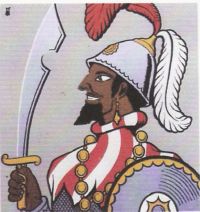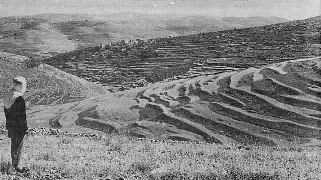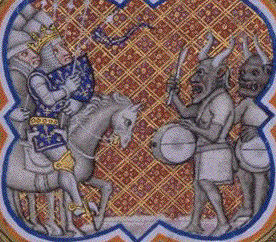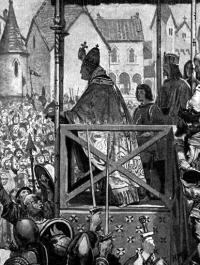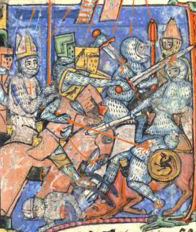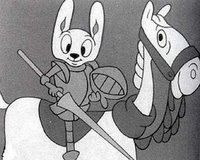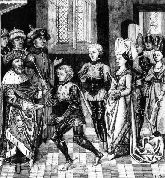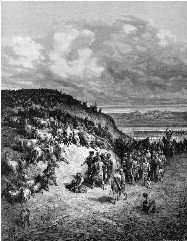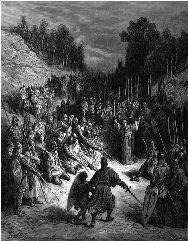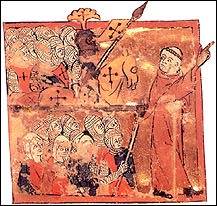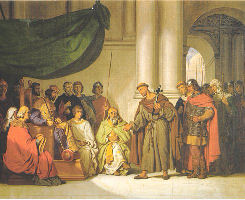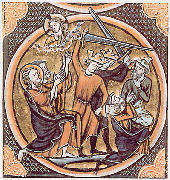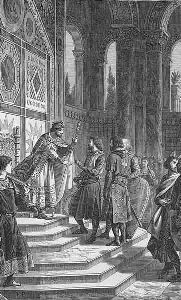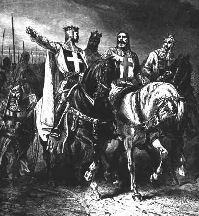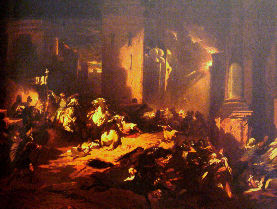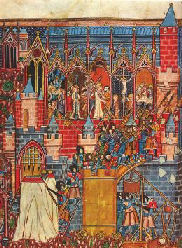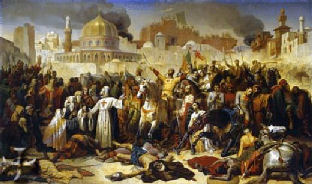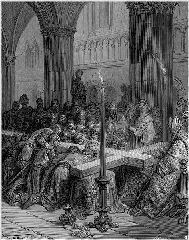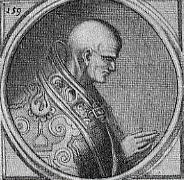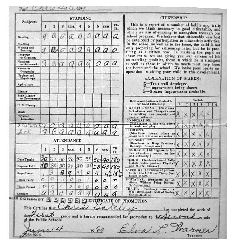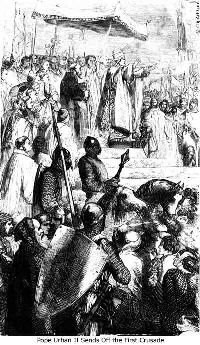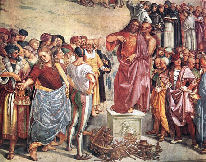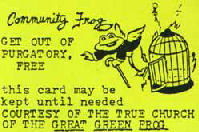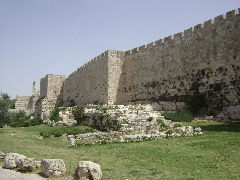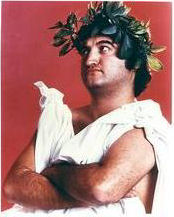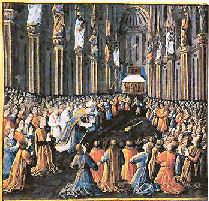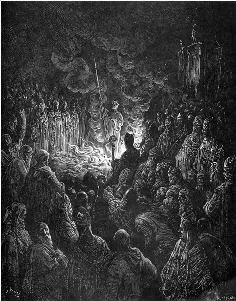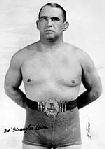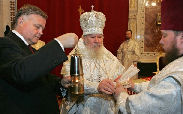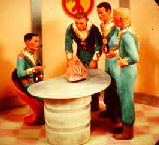Chapter 8: Urbanization of the Holy Land
Mission Impossible
Nothing in history compares with the crusades. Most westerners can readily envision a caravan of stalwart knights en route to the Holy Land, but how many can detail the motives? The origin of the crusades is in no way shameful, and for centuries the papacy was obsessed with them. Nevertheless, Sr. Mary Immaculata neglected them entirely.The crusades originated in France near the close of the eleventh century. The objective was, more often than not, the city of Jerusalem, which had for centuries been held by Muslims. The scale of these undertakings almost defies description. The intrepid knights mounted on proud steeds are familiar figures, and some crusaders came part of the way by ship. However, the majority of the participants – and there were most certainly hundreds of thousands of them – walked nearly the entire distance. France is roughly three thousand miles from Jerusalem, approximately as far as Boston is from Seattle! Even if they averaged twelve miles per day for seven days a week, they would still face over eight months continuously on the road (where there was a road) each way.
A contemporary analogy provides a little perspective. Wild Bill Holden, the “Old Cub Fan” who in 2005 trekked 2,100 miles from Arizona to Chicago, averaged a little over twelve miles per day. He spent the winter months in sunny climes. Sympathetic people arranged food and lodging for him. An Internet site managed his support group. He forded no rivers. Unexpected obstacles were handled by credit card. Now consider the crusaders. They could expect streams without bridges. They could not even count on roads. There was no support network. Their only certainty was that over the last several hundred miles they would need to fight their way through the army of the Seljuk Turks, which had bested the Byzantine forces time after time in the preceding decades or, in later years, through the united Saracen army led by the estimable Saladin. Many crusaders encountered violent residents in Hungary, Bulgaria, or elsewhere. Others ended up battling the Byzantines themselves. By contrast, even when he approached the Gateway Arch, Wild Bill was in little danger of armed assault from St. Louis Cardinals fans. No skilled horsemen armed with bows and arrows surprised him at dawn.Day-to-day conditions faced by the crusades must have often been horrendous. People must eat and drink.[1] They need shelter. They require medical attention when ill or injured. Sanitation poses a persistent problem. The biggest challenge of any invasion is caring for the troops on the way in and out. An invading army must employ at least one of the following strategies:
• Bring enough supplies for the entire two-way trip.
• Live off of the land, which is much easier said than done when tens of thousand of inexperienced and undisciplined travelers are involved. • Pay as you go, which requires both ample cash and willing vendors. It is one thing to welcome a dozen or two pilgrims into one’s town or place of business. When tens of thousands show up, they are as welcome as locusts at harvest time.• Establish secure supply lines.
• Loot and pillage.
Not all crusaders were experienced soldiers. Women and children were not rare; sometimes whole families joined the crusade; there was no shortage of “working women;” solitary men were occasionally shamed into taking the cross by their wives and/or priests; at least once or twice unaccompanied children set off on their own.
Modern pundits have called Wild Bill’s journey “incomprehensible.” How then can a modern reader internalize the infinitely more astounding phenomenon of the crusades? The pope’s trick of producing from thin air the enthusiastic participation of hundreds of thousands of Christians – over several centuries – in a preposterously dangerous, embarrassingly futile, and arguably meaningless enterprise is so mind-boggling that it deserves more detailed analysis than the mundane conjurations of the first 160 popes.
Rediscovering the Holy Land
Back in the fourth century Helena, Emperor Constantine’s sainted mother, was in her late seventies. Unlike some people her age, she did not seek fulfillment at bingo night or in a comfy rocker. Instead, she undertook a famous journey to Palestine, which was still part of her son’s empire. She hoped to locate places mentioned in the gospels and construct shrines there. She ascertained that a pagan temple stood over the site of Jesus’s burial.[2] She ordered it razed and replaced by a Church dedicated to the Holy Sepulcher. Other churches were erected at Olivet, Bethlehem, etc. She has also been credited with finding the True Cross and other artifacts associated with the gospels.At the time religious tourism was a relatively new development. A much higher priority in the first three Christian centuries was just staying alive. The Church emphasized the teachings of the gospels. Traveling Christians were most likely missionaries. After Christianity became the empire’s official religion, the numbers journeying to the Holy Land increased steadily. Eventually the trip became an integral part of Christian culture.
Palestine was controlled by the Byzantines until 638. Thereafter, with only a couple of short exceptions, it remained in the hands of Muslims until the twentieth century. For the first four centuries of Muslim rule, Christian pilgrimages to the Holy Land were by and large tolerated. Perhaps because Jesus, Mary, and the Old Testament prophets and patriarchs play important roles in the Koran, early Muslim rulers were seldom hostile to Judaism and Christianity. Everything changed one Egyptian morning in 1009. While the twenty-four year-old Fatimid Caliph al-Hakim bi-Amr Allah was performing his morning ablutions or maybe grooming his beard, he realized that the face in his mirror belonged to a god. He revealed his divinity to the world and then demolished a large number of existing churches, including the Church of the Holy Sepulcher.At some point in the succeeding years Ralph the Bald (a.k.a. Rodulfus or Raoul Glaber), a French monk who fancied himself an historian, blamed the demolition of the famous church upon Jews residing in France. Somehow the notion penetrated his hairless pate that a letter written by French Jews had persuaded the caliph to destroy the church. Jews were subsequently expelled from several French towns. Anti-Semitic paranoia evidently was widespread among eleventh-century French Christians.
After al-Hakim’s demise, Emperor Constantine IX Monomachus rebuilt a portion of the Church of the Holy Sepulcher in 1048. Not long thereafter the Seljuk Turks began conquering great chunks of Byzantine and Fatimid territory. Jerusalem fell into their hands in 1071. Their treatment of Christian visitors became grist for milling gruesome tales throughout the west. So, in the critical year of 1095 Christianity considered the Holy Sepulcher to be in the hands of evil incarnate.
Imperiled Pilgrims
A pilgrimage is a journey to a holy place for a religious purpose. The Hajj, a pilgrimage to Mecca, is one of the Five Pillars of Islam. Many Buddhists journey to the sacred places of Lumbini, Bodh Gaya, Sarnath, and Kusinara. Members of the Church of Elvis are expected to make periodic pilgrimages to Graceland.
Although Christianity has never mandated pilgrimages, they assumed a particularly important function. In the sacrament of Penance a priest grants provisional absolution. Forgiveness for the confessed sins is deferred until the sinner completes whatever the priest designates as the so-called penance. In those days priests sometimes specified pilgrimages to shrines or other holy places as penance. The completion of a pilgrimage consequently became associated with the remission of sins.
Early in the second millennium the pilgrimage to Jerusalem achieved unparalleled popularity. In 1026 the Duke of Normandy sponsored one for seven hundred Christian faithful. Thirty-eight years later a throng estimated at twelve thousand was led on an unprecedented trek to Jerusalem by four German bishops. Günther, Bishop of Bamberg, the youngest of the four, assumed the mantle of leadership. The pilgrims hiked as far as Constantinople without inordinate difficulty, but the sojourn through the land of the so-called Saracens – and much of the land between Constantinople and Jerusalem was then controlled by Muslims – was much more challenging. The travelers exhibited questionable judgment. The bishops evidently made a great show of their dignity and wealth at every stop. Günther was every bit as imperious in his demeanor as even the Byzantine nobility. The citizenry of Constantinople figured him for a king or even the Holy Roman Emperor himself – whom they had heard of but never seen – traveling in disguise. Furthermore, most of the group eschewed the carrying of arms. Since their pilgrimage was consecrated to God, they reasoned that the use of arms would be impious and that weapons would therefore be an unnecessary burden. So, as incredible as it may seem, many attempted this epic journey totally defenseless.Here is a synopsis of the account of Lambert of Hersfeld, a young priest who completed the pilgrimage. My own commentary is in brackets []:
The appearance of travelers so obviously rich and defenseless was too tempting for some inhabitants of the Muslim lands. [The unarmed pilgrims were like a buffalo herd wandering into the Sioux nation.] At the first hostile encounter with the Arabs, which occurred on Good Friday, the pilgrims defended themselves by throwing rocks. Many Christians were killed; many more were wounded. William, the Bishop of Utrecht, was left behind wounded and naked. In a town that they identified as Capharnaum the desperate survivors found a fortified dwelling. They holed up there and did without food and drink for three days. At that point all agreed to announce their surrender, and they allowed eighteen Arabs into the building to negotiate the terms. Bishop Günther spoke for the pilgrims. He and the other leaders expected the party to pay dearly for its freedom, but he remained confident that he could convince the Arabs to release all the Christians. [Evidently the young bishop had never attended the Karrass Effective Negotiating Two-Day Seminar. Research reveals that portraying oneself as defenseless and willing to surrender seldom is a winning negotiating strategy. Postponing the bargaining until they were on the verge of starvation and dehydration likewise undermined the Christians’ position.] Not only did the Arab leader reject out of hand the bishop’s request for mercy; he also announced his group’s plans to devour the Christians. [At the first mention of turning the pilgrims into shish kebab, Bishop Günther should probably have questioned whether consumption of Christian flesh was permitted by Halaal.] He then commenced to unwind his turban and wrap it around Günther’s neck. Günther extricated himself from the turban-garrote and then floored his assailant with one fell blow from his bejeweled episcopal fist. [Fortunately, the bishop’s daily dozen evidently included plenty of neck bridges. Also, he must have remembered that the best counter to a stranglehold was a Jawbreaker.[3]] Bishop Günther and his Christian companions trussed up all eighteen members of the Arab negotiating party and employed them as human shields to wend their way through the assembled Muslims. The son of the KOed Arab leader restrained the others from further violence. Shortly thereafter the cavalry arrived. The troops of the caliph from Baghdad or Cairo or some such place [called “Babylon” by Lambert] scattered the Saracens to the four winds. The pilgrims then continued on to Jerusalem with no further difficulty.There is, of course, no reliable evidence that any Arabs, who were on the whole much better educated and more civilized than western Europeans and had well documented religious scruples about the composition of their diet, ever consumed any Christians. It is nevertheless likely that stories as outrageous as Lambert’s influenced the attitudes of the ignorant masses in France and Germany. Other accounts, moreover, indicated that the German pilgrims’ problems persisted after this encounter. Günther himself failed to return. In fact, only two thousand of the pilgrims returned alive.
Bad Times for the Byz
By the eleventh century the Byzantine Empire’s power had waned. In 1071 the Normans drove them out of Bari, their last stronghold in Italy. Emperor[4] Romanus IV Diogenes was too busy elsewhere to send troops to Italy. In the same year he personally led the imperial army against the Seljuk Turks in the Battle of Manzikert. Despite their large numerical advantage, the Byzantines suffered a humiliating defeat. The army of approximately one hundred thousand men was routed. The emperor himself was captured and had to be ransomed. Asia Minor was thereafter left defenseless. In 1084 the Turks captured the ancient Christian capital of Antioch. Meanwhile, in 1081 the Normans from southern Italy, led by Robert Guiscard, captured Dyrrachium, which is in Albania. From that base they threatened to overrun Constantinople itself from the west. The next year, however, Emperor Alexius I Comnenus, enlisted the help of the Venetian fleet. Together they succeeded in expelling the Normans, then led by Robert’s son Bohemund. Alexius promised the Venetians unrestricted trade anywhere in the empire and exemptions from customs duties in perpetuity. Within a few centuries Venetian wealth was almost unimaginable.The Venetian armada availed little, however, against the land-based advances of the Turks. In desperation in 1089 Alexius entrusted to a returning pilgrim a letter addressed to the pope. It implored him to send armed forces to help hold off the Turks. It probably also implied that the Church, split since 1054, might be reunited under Roman jurisdiction. Alexius probably hoped that the pope might loan him a few thousand mercenaries. He may not have realized that the pope had been evicted from Rome and had become an itinerant beggar. Seven years elapsed before any pontiff answered the request. What appeared on the emperor’s doorstep must have shocked him.
“Deus Lo Volt!”[5]
In the 1090’s western Christians considered the Middle East to be in a state of dire peril. The Holy Land, which Charlemagne had centuries earlier sworn to protect, was controlled by Muslims antagonistic to Christians. The only Christian ruler, the Byzantine Emperor, was clearly on the ropes. How the Roman Church and the feudal lords of the western countries reacted to this crisis has been the subject of many erudite papers. Scholarly techniques have laid bare the motives driving the principal actors. Learned experts have employed subtle textual exegesis. Other researchers applied appropriate historical analogies. Tactics and strategies have been dissected. Some analysts even resorted to pop psychology. As valuable as these insights are, no cogent explanation with universal appeal has emerged.
This monograph will employ a methodology thus far neglected by historical, military, and religious scholars. It will compare and contrast two competing laws of physics. Sir Isaac Newton enunciated in the seventeenth century his famous Third Law of Motion: “For every action there is an equal and opposite reaction.”[6] When something seems likely to affect something else, proponents of this law, commonly known as Newtonians, attempt to calculate the likely reactions and then adjust their plans accordingly. More recently a contrasting axiom was proffered in Sir Sidney Fudd’s First Law of Opposition: “If you push something hard enough, it will fall over.”[7] Fuddians, as typified by Faber College’s John Blutarsky, favor a much more direct response to a crisis. When confronted with the threat to close down his fraternity house, for example, Bluto responded that he was not going to take it, and all of the dean’s associates were dead men. A colleague voiced strong support for that approach: “I think we have to go all out. I think this situation absolutely requires a really futile and stupid gesture be done on somebody's part.” Bluto immediately validated this logic by responding “We're just the guys to do it.” This chapter explores which of these two theoretical frameworks better explains the pope’s response to the crisis in the eastern half of Christianity.The French monk Odo of Lagery was prior of the famous monastery of Cluny when he visited Pope Gregory VII in Rome. In 1078 he was assigned the prestigious position of cardinal-bishop of Ostia. Just before his death in 1086 Gregory recommended Odo as eventual pontiff. When Gregory’s immediate successor, Pope Victor III, died two years later, Odo was chosen as pope by acclamation of the cardinals loyal to the reform movement. He took the name Urban II.
Had it been feasible, Pope Urban would probably have implemented all of Gregory VII’s principal reforms – elimination of simony, enforcement of clerical celibacy, and termination of the right of investiture. However, early in his papacy Urban was not even allowed in Rome. The Eternal City was occupied by the antipope Clement III with the support of Holy Roman Emperor Henry IV, his army, and many cardinals as well.[8]Until 1094 Urban never resided in the Lateran Palace. He spent the interim traversing southern Italy begging for daily sustenance and cementing support among the bishops. Nor did obtaining a fixed Roman address turn him sedentary. In 1095 he called councils throughout Europe. Two primary themes were the severe difficulties faced by the eastern empire and the loss of the Holy Land. Representatives of Emperor Alexius even journeyed from Constantinople to address the two hundred bishops and five thousand priests assembled in Piacenza in the spring of 1095. The papal tour culminated with a massive synod in Clermont, France, in November. Before a throng so large that the event had to be staged outdoors, Pope Urban issued his call for a crusade to the Holy Land, probably the most effective oration ever to emanate from human lips. Not only did Christians immediately respond to his call; the movement persisted for four centuries! Nothing comes close to this in Christian history.
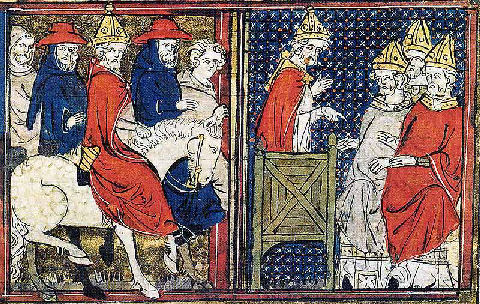
- The Holy Land, especially the Church of the Holy Sepulcher, must be recovered for the Christian Church.
Robert: “This the Redeemer of the human race has made illustrious by His advent, has beautified by residence, has consecrated by suffering, has redeemed by death, has glorified by burial. This royal city, therefore, situated at the centre of the world, is now held captive by His enemies, and is in subjection to those who do not know God, to the worship of the heathens.”
Gesta: “… if anyone desired to follow the Lord zealously, with a pure heart and mind, and wished faithfully to bear the cross after Him, he would no longer hesitate to take up the way to the Holy Sepulcher.”
Balderic: “Of the Lord’s Sepulcher we have refrained from speaking, since some of you with your own eyes have seen to what abominations it has been give over. … And yet in that place rested the Lord; there He died for us; there He was buried.”[9]
Balderic: “Let us bewail the most monstrous devastation of the Holy Land. This land we have deservedly called holy in which there is not even a footstep that the body or spirit of the Savior did not render glorious and blessed …”
Guibert: “God leading you, God fighting in your behalf, you should strive with your utmost efforts to cleanse the Holy City and the glory of the Sepulcher, now polluted by the concourse of the Gentiles, as much as is in their power.” “… the approaching time of the Antichrist. … And if Antichrist finds there no Christians (just as at present when scarcely any dwell there), no one will be there to oppose him.” “Consider what taxes, what violence (the pilgrims to Jerusalem) underwent, since they were forced to make payments and tributes almost every mile. … If they refused to pay money, the prefect of the Gentiles, according to their custom, urged them fiercely with blows.”
- It is better for Christians to kill pagans/Muslims than to kill one another. Part of the call for the crusade involved a truce among western feudal barons.
Fulcher: “Let those who for a long time have been robbers now become knights. Let those who have been fighting against their brothers and relatives now fight in a proper way against the barbarians.”
Robert: “Hence it is that you murder one another, that you wage war, and that frequently you perish by mutual wounds. Let therefore hatred depart from among you, let your quarrels end, let wars cease, and let all dissensions and controversies slumber.”
Balderic: “You, girt about with the badge of knighthood, … rage against your brothers and cut each other to pieces. … it is less wicked to brandish your sword against the Saracens. It is the only warfare that is righteous.”
- If you go on the crusade, your sins will be forgiven.
Fulcher: “All who die by the way, whether by land or sea, or in battle against the pagans, shall have immediate remission of sins. This I grant them through the power of God with which I am invested.”
Robert: “Accordingly undertake this journey for the remission of your sins, with the assurance of imperishable glory of the kingdom of heaven.”
Gesta: “Great is your reward in heaven.”
Balderic: “Or empurpled with your own blood, you will have gained everlasting glory.”
- Israel, the land of milk and honey, can put an end to your financial woes. A famine and an epidemic had crippled northern France in 1095.
Robert: “This land which you inhabit, shut in on all sides by the seas and surrounded by the mountain peaks, is too narrow for your large population; nor does it abound in wealth; and it furnishes scarcely enough food for its cultivators. … Enter upon the road to the Holy Sepulcher; wrest that land from the wicked race, and subject it to yourselves. That land which as the Scripture says ‘floweth with milk and honey,’ … fruitful above others, like another paradise of delights.”
Balderic: “Know that those who fear God want nothing, nor those who cherish Him in truth. The possessions of the enemy, too, will be yours, since you will make spoil of their treasures and return victorious to your own.”
- Our Christian brethren in the east need our help.
Fulcher: “The Turks and Arabs have attacked them and have conquered the territory of the Byzantine empire as far west as the shore of the Mediterranean and the Hellespont, which is called the arm of St. George. … They have killed and captured many and have destroyed the churches and devastated the empire.”
Robert: “An accursed race, a race utterly alienated from God, … has invaded the lands of those Christians and has depopulated them by the sword, pillage, and fire. … They circumcise the Christians, and the blood of the circumcision they either spread upon their altars or pour into the vases of the baptismal font. When they wish to torture people by a base death, they perforate their navels, and dragging for the extremity of the intestines, bind it to a stake; then with flogging they lead the victim around until the viscera having gushed forth the victim falls prostrate on the ground. Others they bind to a post and pierce with arrows. … What shall I say of the abominable rape of women? To speak of it is worse than to be silent.”Balderic: “… our Christian brothers, members in Christ, are scourged, oppressed, and injured in Jerusalem, in Antioch, and the other cities of the East. Your own blood brothers, your companions, your associates (for you are sons of the same Christ and the same Church) are either subjected in their inherited homes to other masters, or are driven from them, or they come as beggars among us; or, which is far worse, they are flogged and exiled as slaves for sale in their own land.”
Their individual motivations were at least as diverse as the objectives articulated by the pope. Essentially if you desired to walk in the Lord’s footsteps, kill some “pagans,” get saved, get rich, or help fellow Christians in what was left of the Roman Empire, the crusade was your ticket. Just display a cross sewn on the chest of your garment on the way to Jerusalem, and transfer it to your back for the return trip.
Was Urban’s speech effective? Indeed it was. To be precise, it was astoundingly successful at persuading western Christians into taking dramatic action in support of the pope.
The People’s Crusade
Poor planning and ineffably bad results epitomized the earliest efforts. The first expediiton consisted of a few thousand Franks mustered in Cologne around Easter of 1096 by a knight named Walter the Penniless. They ran into difficulty near the city of Belgrade, but after some looting and losses in skirmishes with Bulgarians the survivors were escorted to Constantinople by the Byzantine army.A monastic priest named Peter the Hermit, a veteran of at least one pilgrimage to Jerusalem, headed the next group. He had spread the word far and wide about his mistreatment as a pilgrim. As soon as the synod in Clermont had ended, Peter began assembling a following. Despite his off-putting appearance,[12] he must have been quite persuasive. His party, according to William of Tyre, was “innumerable as the sands of the sea.” Peter financed the expedition in part by extorting money from Jews, whom he considered to be “murderers of Christ” – not descended from the murders, the culprits themselves.
Peter’s company followed roughly the same route trod by Walter and his followers. They survived the journey through Hungary. However, Peter’s horde was decimated in Bulgaria. Many thousands perished. Those who reached Constantinople in July 1096 probably envied the dead. They had been battered physically and were near starvation.Both Walter’s group and Peter’s included knights, but neither could pass for a serious military unit. The standing armies of the European princes shunned the crusade’s first waves.
The remnants of the two contingents joined forces in Constantinople, a city with appointments (running water!) far beyond the experience of the astounded westerners. The emperor evidently treated the new arrivals well despite the evident inability of their leaders to control them. It is hardly an exaggeration to say that the westerners pilfered everything that their hands touched. Emperor Alexius hastily provided them with one-way transportation across the Bosporus. The plan was for them to await the main armies in Civetot on the Asian side.
This arrangement was not really that dangerous, even for the inexperienced westerners. It was preferable to what they had endured en route and paradise compared to what lay ahead to the south. Since Christ’s vicar on earth had promised them great riches, they felt little compunction about plundering the countryside despite the fact that nearby towns were mostly inhabited by Christians. They couldn’t agree on tactics, so they split into two groups. The one consisting mostly of Franks marched on Nicea, which was under Turkish control. They put to death anyone along the way who seemed uncooperative. They then used the element of surprise to win the first battle with the Turks. Unable to penetrate the walls of Nicea itself, they bided their time by looting a few Christian settlements around the city.The other group of mostly Germans and Italians settled in a fortress named Xerigordon. One morning they found themselves surrounded by Turks who had also siezed the only source of water. The parched crusaders capitulated on the eighth day of the siege. A few renounced Christianity and were sold into slavery. The rest, including Walter the Penniless, were put to the scimitar.
The crusaders in Civetot were shamed by their leaders into marching to Nicea. On the way they were caught in a deadly ambush and annihilated. Scores of thousands began the trek from western Europe, but only a few thousand remained when the Byzantines sailed across the Bosporus to rescue them. Peter the Hermit was lucky; he had returned to Constantinople and missed these misadventures.
Additional contingents soon set out from western Europe. Fifteen thousand Germans led by a monk named Gottschalk neglected to secure the protection of King Koloman of Hungary and were slaughtered by his majesty’s army. Count Emich von Leiningen’s group traversed Germany murdering and/or robbing thousands of Jews. When they ran out of Jews, they terrorized their fellow Christians. King Koloman, who had by that time experienced quite enough of the crusaders’ misdeeds, killed most of them and drove the rest back to Germany. By the first anniversary of the pope’s call for a crusade, several hundred thousand people – crusaders, their victims, their enemies, and bystanders – had already died. It calls to mind the old saying. “If you want an omelet, you have to break a few hundred thousand eggs.” For the Christians the oversized frittata was not even tasty, at least not yet. Through the summer of 1096, beyond depopulating western Europe and Asia Minor and insinuating complacency into the mindset of the Seljuk Turks, little had been accomplished. The movement itself was bloodied but unbowed. In fact, the crusade had not even really begun.The Second Wave
Real soldiers began appearing in Constantinople in the late fall of 1096. The emperor must have been aghast at the size and composition of the forces disembarking in his capital. Bohemund, the Norman whom Alexius had so recently engaged at the walls of Constantinople, brought an army of 150,000 crack troops. Raymond, the count of Toulouse, had approximately 100,000 at his command, including many mounted knights. In total the regular army consisted of 300,000 men or more. Alexius employed his home court advantage, his ability to think on his feet, and his Byzantine cunning to strike a favorable deal with the crusaders. In return for the emperor’s material support, the western leaders pledged that all captured lands would be returned to Alexius. He promised imperial troops for the crusade, but he was vague about when they might take the field of battle.The First Crusade was a contorted amalgam of political intrigues, treachery, remarkable bravery and battlefield skill, indescribable agony, casualties by the tens of thousands, and, in the end, complete victory for the crusaders. It took almost three years, but Jerusalem finally fell to the westerners – Alexius never deployed his troops – on Friday, July 15, 1099, two weeks before the death of Pope Urban, who never learned of the triumph.
The Conquest of Jerusalem
The Christians endured horrific suffering en route to Jerusalem. Their numbers were decimated by hunger, disease, ferocious battles, and the inevitable desertions. Perhaps the worst period was during the siege of Antioch, in which even the fanatical Peter the Hermit tried to go AWOL. Some crusaders were diverted to other engagements; Bohemund and his men, for example, occupied Antioch after the victory there. Only about fifteen thousand war-weary veterans arrived at the walls of Jerusalem. They then pitched camp in the blazing sun and devised plans for the siege. Their efforts were impeded by missiles as well as boiling oil and pitch. They suspected that they had no time to spare; reliable scouts reported a large Egyptian army on the march toward Jerusalem. On the plus side, the Christians were perhaps the most accomplished fighters in the world, and each man was absolutely certain that God was on their side. There would be no stopping them. The siege of Jerusalem culminated in unspeakable events. Raymond of Toulouse negotiated a lucrative deal with the leader of the defenders, Iftikhar ad-Dawla. Raymond allowed Iftikhar and his personal bodyguard to be escorted safely out of town. Once the walls were breached, however, the crusaders exhibited no restraint whatever toward the thousands of remaining inhabitants. According to William of Tyre, “They cut down with the sword everyone whom they found in Jerusalem, and they spared no one. The victors were covered with blood from head to foot.” Raymond of Agiles wrote that in the temple enclosure there was blood up to the knees of the horses. Guibert described a sea of blood as almost to the height of a man. Jews – not Muslims, Jews – were burnt alive inside their synagogues. Not one person was spared. There is no reason to bring up that omelet again, is there?Despite their promise, the crusaders did not remand any territories to the Byzantines. The pope himself had promised Jerusalem to the crusaders; what was an agreement with a schismatic emperor weighed against the solemn word of the Holy Father? Instead, they established a feudal kingdom. Its first ruler was the acclaimed hero Godfrey of Buillon. He was succeeded by his brother Baldwin.
Simeon, the Patriarch of Jerusalem who had been in exile in Cyprus, died shortly before the crusaders’ victory. The clergy accompanying the crusaders elected Arnulf, the Bishop of Marturano, as the new patriarch. Despite the fact that the Greek rites had long been the norm in Jerusalem, Arnulf immediately banished all Greek priests. Before allowing them to depart, the bishop’s men employed torture to force them to disclose the location of a relic identified as a piece of the True Cross. Men must have been made of sterner stuff in those days if torture was needed to persuade them to disclose the whereabouts of a splinter. Arnulf’s patriarchate was short-lived. Pope Paschal II appointed Daimbert (or Dagobert), the Archbishop of Pisa, to succeed Bishop Adhemar as the papal legate to the crusade. The Pisan fleet escorted Daimbert to the Middle East. He first formed an alliance with Baldwin and Bohemund. The trio arrived in Jerusalem with a force of 25,000 men on December 21, 1099. They immediately deposed Arnulf on the grounds that his election as patriarch had not been canonical. Bohemund and Godfrey insisted that Daimbert be elected patriarch. He quickly returned the favor by turning Jerusalem over to Godfrey and Antioch to Bohemund. Godfrey and Bohemund gladly recognized Daimbert as suzerain because that act assured support in Europe for their claims to these priceless territories.News of the glorious victory spread throughout the Christian west. With the Church’s wholehearted encouragement thousands upon thousands of Europeans sewed the cross on their garments and departed for the Holy Land. Some came to add their swords to the defensive effort. Some came to establish settlements. More than a few came just to escape debts.
Report Card
Every six weeks a wave of dread spread over Sr. Mary Immaculata’s class. Report cards were due, and S’ter was a notoriously tough grader. To add to the tension, grades were not a private matter in our school. Our cranky old pastor, Fr. Brontolone, visited each classroom to read aloud the marks of every single student. He even occasionally summoned a kid to stand beside his chair for a browbeating about his/her performance. Public humiliation was chicken soup for the young Catholic soul.Pope Urban II will enjoy two distinct advantages over the students in S’ter’s class. In the first place, he was allowed to set his own standards. He will be graded in the same areas that he outlined in his speech at Clermont. Second, since Sr. Mary Immaculata was on retreat, he will be evaluated by a much more lenient grader.
Pope Urban posited five motives for the crusade. He almost certainly had a sixth unmentioned one – to reunite the two Churches under papal jurisdiction. Here is his report card for the First Crusade.
- The Holy Land, especially the Church of the Holy Sepulcher, must be recovered for the Christian Church.
A-. The primary goal had been achieved in a spectacular fashion; the Church of the Holy Sepulcher was open for business. Furthermore, a westerner ignorant of Greek could participate in the Latin mass, and he or she could swallow the familiar unleavened bread at communion time. The crusaders’ ability to maintain their oriental toehold amidst incensed enemies was questionable, but this would not greatly concern Pope Urban. He was convinced – as were many predecessors and quite a few successors – that his lifetime was the beginning of “the end times” before the Second Coming. It was critically important that a Christian presence be established in the Holy Land before the imminent appearance of the Antichrist. After that, the future would take care of itself, or, more precisely, the Lord would care for His own.
- It is better for Christians to kill pagans/Muslims than to kill one another. Part of the call for the crusade involved a truce among western feudal barons.
C-. In theory the truce was still in force, but armed conflicts were about to break out again in both western Europe and the Holy Land. Furthermore, not everyone observed the truce. Holy Roman Emperor Henry IV had “other priorities” and issued himself five deferments – one for each year of the First Crusade. He remained as bellicose as ever. Pope Urban himself felt no compunction against ousting the antipope, Clement III, from Castel Sant’Angelo by force of arms. The emperor still claimed the power of investiture, and the papal approach to this issue entailed more violence, not less.
If the goal was to decrease the amount of violence within the confines of western Europe, then the crusade was moderately successful. However, if the pope meant to reduce overall bloodshed, it was a catastrophe. Christian history provides no precedent for the carnage inflicted on and by the participants of the First Crusade.
- If you go on the crusade, your sins will be forgiven.
A? Given the staggering level of casualties, Europeans must have fervently hoped that the pope was serious about his offer of a plenary indulgence to all those who took the crusader’s vow and completed it. Unfortunately, this was not precisely a “Get Out of Purgatory Free” card, as Chapter 9 explains.
- Israel, the land of milk and honey, can put an end to your financial woes. A famine and an epidemic had hit northern France in 1095.
A. The crusaders struck the mother lode. The exodus of the crusaders was a quick fix for the overpopulation problem of towns of western Europe. Of course, the able-bodied abandoned the overcrowded towns; the sick, weak, and lame stayed behind. Many who survived the first crusade garnered massive amounts of booty, especially when Godfrey’s troops routed the Egyptian army shortly after the capture of Jerusalem. The crusaders also seized most of the Holy Land and the surrounding environs. Bohemund held Antioch. The eastern trade routes were opened to the merchant fleets of the Italian city-states. Italian port towns became fabulously wealthy in the ensuing years.
- Our Christian brethren in the east need our help.
B. The good news for Constantinople was the temporary quelling of the threat from the Seljuk Turks. Moreover, the hostility of the next few generations of Muslims would be directed more toward the westerners than the Byzantines. So, the crusade bought the Byzantine emperors some time in which to regroup. The downside was that they regained little territory. If anything, the Greeks were demoted from the second most powerful force in Asia Minor to third place. Also, the conquest’s collateral effects were substantial. Christian towns were plundered by the crusaders. More than a few Greek Christians fell before the westerners’ swords. The Greek clergy suffered humiliation and torture at the hands of Christians in Jerusalem. The Greek Church also forfeited its ancient patriarchates of Jerusalem and Antioch.
- Reuniting the Church.
U.[13] The outrageous behavior of many crusaders deepened the alienation and hardened the attitude of the eastern Church. Reunification was much less likely than before the crusade. Having seen up close how the westerners behaved, most easterners accounted them ruthless uncivilized barbarians. They might have felt more affinity for the much more cosmopolitan Muslims than for their fellow Christians.
- or -
A. The view from Rome was quite different. The Greeks, after all, professed heretical beliefs about the “Filioque” in the creed, and they obstinately refused to recognize the pope’s sovereignty. Reducing their numbers and humiliating their leaders could be interpreted positively. After the crusade who could doubt the power, majesty, and authority of the Church of Rome? In addition, two lost patriarchates came under the Roman aegis for the first time in many centuries.
Unfortunately this analysis ignores much of the balance sheet. The First Crusade resulted in hundreds of thousands of deaths, perhaps a million or more. It engendered a great deal of long-lasting[14] deep-seated enmity toward the Church and the western lands. Resentment was not confined to the Muslims. Both the Jews in Europe and the Middle East and the eastern Christians also suffered at the hands of the crusaders.
There were unexpected plusses, too. The greatest benefit in the long run was the exposure to the philosophical and scientific advances of the Arabs and the Byzantines. The Franks and Normans were more than a match for the easterners when it came to military tactics, fighting ability, seamanship, and, especially, endurance in the face of adversity. However, in non-military disciplines the west’s state of learning was pitiful. Petrarch rightly called these times the Dark Ages.
More than anything, the crusades exemplified the essential truths underlying the Fudd-Blutarsky hypothesis. Highly motivated men can accomplish truly incredible feats. They are fully capable of ignoring any number of obvious impediments. Their myopic perception enables remarkable achievements even when the means are perilous, and the probability of success appears negligible. The First Crusade may be the first documented[15] example of this principle. It was by no means the last. Columbus’s trip across the Atlantic, Magellan’s circumnavigation, the trek across western America by Lewis and Clark’s Corps of Discovery, the polar expeditions, climbing Mt. Everest, and the first manned lunar landing come to mind. These feats produced long-term benefits for society at large, but if one calculated the cost-benefit ratio for the participants themselves, how could they be considered anything but foolhardy?Road Trip!
John Blutarsky’s alter-ego was a star of the First Crusade. He has been described as an unhorsed knight from northern France or Flanders. His birth name is unknown; he took for himself the title of Le Roi Tafur – King of the Tafur. His subjects were an irregular band of zealots who tagged along with the armies during the sieges of Antioch and Jerusalem, as well as several other battles. They lacked money, armor, and serious weapons. Instead they favored rags, hair shirts, and bludgeons. Hygiene standards were not lofty among the crusaders, but even the most slovenly were appalled by the Tafur. In my mind’s eye, Le Roi himself wore only a crazed look and a stained bedsheet knotted over one shoulder. “To-ga!”
If he discovered that one of the Tafur possessed anything resembling a sword or the means to purchase one, Le Roi allegedly banished him to the ranks of the regular army. No men-at-arms need apply to the Tafur. Nevertheless they played important roles in the crusaders’ cause as slingers, shock troops, and even pack animals. Since they would eat practically anything, even roots, they were cheaper than mules. They were reportedly the first combatants through the breach of the walls at Antioch, at which point they engaged in murder, rape, desecration, and general mayhem. In the siege of Jerusalem, Le Roi exhorted the expedition’s leaders to attack the heavily fortified city immediately. The fact that the defenders were pouring pitch and boiling oil on the unfortunates manning the siege towers did not impress him.The Tafur were widely believed to be cannibals. Raymond of Aguilers attributed this practice to them at the siege of Ma’arra. When they entered battle, they did not chant the regular army’s battle cry “Deus lo volt!” Instead they gnashed their teeth as if preparing to eat their opponents. The crusaders actively promoted the belief in the Tafur’s cannibalism. They roasted the flesh of a fallen Turk in full view of the defenders of Antioch. To augment the terror the papal legate, Bishop Adhemar, who was certainly neither a Tafur nor a cannibal, authorized a reward for the heads of dead Turks. He placed them on the ends of long poles.
The Holy Lance
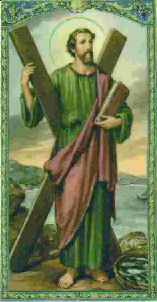
After Antioch fell to the crusaders, the Christians dug up the floor of the Church of St. Peter. A thorough search yielded nothing. Then the nearly blind Peter Bartholomew himself was led into the church, which by then must have resembled an archeological dig. He almost immediately produced from the ground a small piece of iron,[17] which he identified as the head of the Holy Lance. Oh, Magoo, you’ve done it again! The find was generally considered proof that God was truly on their side.[18] The crusaders affixed the relic to a pole and brandished it prominently in a battle that resulted in a great victory over Kerbogha, the Turkish leader who had laid siege to Antioch after its Christian occupation. This triumph was credited with saving the entire crusade.
Bishop Adhemar thought of Peter Bartholomew as the Joe Isuzu of the First Crusade. From the beginning the papal legate had doubted his claims. However, the monk’s discovery was such a morale-booster that for a while the bishop kept his reservations to himself. When Peter Bartholomew began promoting himself as a source of divinely inspired military advice, he was widely derided. Eventually the exasperated monk insisted on an ordeal by fire to vindicate his visions. He proposed to walk through two flaming piles of wood on April 8, 1099.The ordeal did not go well. From his sickbed the pain-wracked Peter stubbornly reported that St. Andrew had shown him an image of Bishop Adhemar burning in hell. However, the mystical monk himself only survived for eleven days after his ordeal.
From that point on the lance became a taboo topic. The fire had spoken.
[1] The crusades ended long before Ellen Greve, Wiley Brooks, and their Breatharian followers taught humanity how to obtain sustenance from the air. The World’s Most Incredible Stories: The Best of Fortean Times, 1998, Barnes and Noble Books, p. 184. According to its website, the Breatharian Institute is located on Earth Prime (5D).
[2] Other contenders for the location of the site have emerged recently. One argument raised against the location of the Church of the Holy Sepulcher is that it is within the city walls. Jewish law prohibited burial within the city.
[3] This is a joke. There is no reliable counter to a headlock properly applied by a strong man wearing a cup. The professional wrestler Robert Friedrich, better known as Ed “Strangler” Lewis, used almost nothing but headlocks, and he lost only thirty-five matches out of 6,742, and this was before the days of “sports entertainment.”
[4] In this chapter the word “emperor” refers to the Byzantine ruler based in Constantinople.
[5] The rallying cry of the crusaders clearly means, “God wills it,” even if the phrase does not seem grammatically correct in any language. “Deus vult” would be the Latin form. The “volt” looks like a French touch. The word “lo” is a common article and pronoun in Italian.
[6] Newton, Philosophiae Naturalis Principia Mathematica, 1687.
[7] Firesign Theater, I Think We’re All Bozos on this Bus, 1971.
[8] Clement appointed twenty-five cardinals. The Church subsequently labeled them pseudo-cardinals, but their zucchetti were just as red as anyone else’s. As long as Clement was in town, he and his cardinals ran the show.
[9] Balderic has wonderful things to say about the “yearly miracle” of the “Holy Fire,” which allegedly occurs every Holy Saturday by the Greek Orthodox calendar. Greek Orthodox Christians have repeatedly claimed that this event proves that the western calendar is erroneous.
[10] The text of Urban’s letter of instruction to the crusaders pales in comparison with the recollections of his speech. The sole purpose posited for the journey was “to free the churches of the East.”
[11] Or was he? Several crusaders claimed to see Adhemar in the thick of the fighting the day that Jerusalem’s walls were breached.
[12] “Peter was a short, elderly man whose face was almost as long and sad as that of the donkey he always rode. His garments were filthy. His bare feet had not been washed in years. He ate no meat or fruit, living almost entirely on wine and fish.” J. Arthur McCall, Military History Magazine, February 1998.
[13] There were no F’s in our class. The failing grade was U (unsatisfactory).
[14] In 2001 President George W. Bush discovered that the word “crusade” was still poisonous in the Middle East.
[15] The word “documented” was inserted in order to exclude the Egyptian pyramids, which obviously could never have been constructed without assistance from some combination of anti-gravity devices, time machines, and assistance from extra-terrestrial races. See, for example, Paul Revere, Alien Alert!: The Mystery Solved Of – Who They Are – What They Want And – What We Must Do, Xlibris, 2000, pp. 166-167.
[16] St. Helena allegedly located the so-called Lance of Longinus back in the early 300’s. It was subsequently lost, but it nevertheless repeatedly appeared in pilgrims’ accounts over the course of the first millennium. Several churches and museums still claim to possess the authentic item.
[17] Rustoleum was invented in 1921 by a Scottish sea captain named Robert Fergusson.
[18] The lance has allegedly assisted a wide variety of saints and scoundrels including St. Maurice, Emperor Theodosius, Alaric the Visigoth, Charles Martel, Charlemagne, Frederick Barbarossa, Napoleon, and Adolf Hitler.
 | |
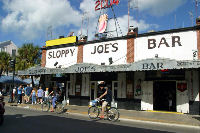 | |
Bankable Bar Bets
$ Most of the twelve thousand participants in the eleventh-century pilgrimage led by Günther, Bishop of Bamberg, from Germany to the Holy Land brought no weapons with them. Only about two thousand made it back alive.
$ Ed “Strangler” Lewis lost only thirty-five wrestling matches out of 6,742 even though he seldom used any holds besides headlocks.
$ Pope Urban II’s speech in 1095 inspired hundreds of thousands of western Europeans to join the First Crusade.
$ The one western European country with a poor participation rate in the crusades was Italy.
$ Of the roughly 300,000 soldiers who landed in Constantinople and the hundreds of thousands of civilians who set out on the First Crusade, only about fifteen thousand made it to Jerusalem.
$ The Muslim leader of the defense of Jerusalem negotiated his way out of the siege. Other non-Christian residents of the city were killed by the crusaders. Jews were burned, and Muslims were put to the sword.
$ The Tafur were fierce Christian fighters who eschewed swords and armor.
$ Christian crusaders tortured priests of the Greek rite in Jerusalem until they revealed the location of a piece of the True Cross.
$ Peter Bartholomew, almost completely blind, claimed that he found the head of the lance that pierced the side of Jesus in the dirt inside a church in Antioch.

